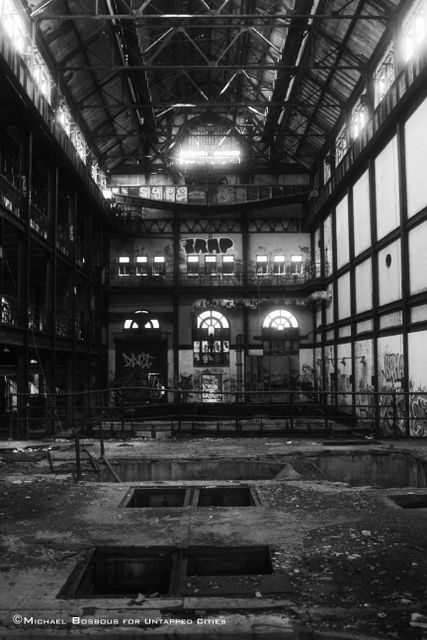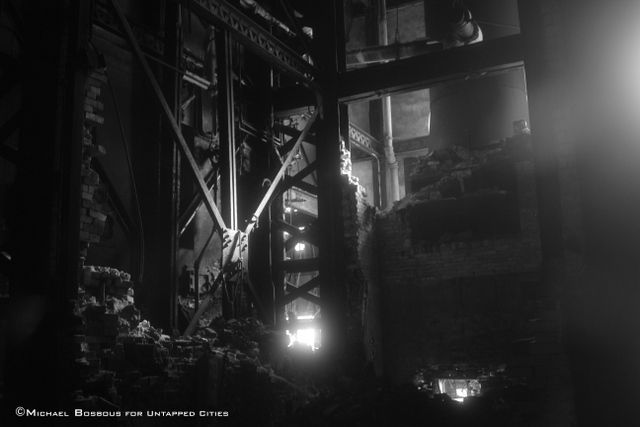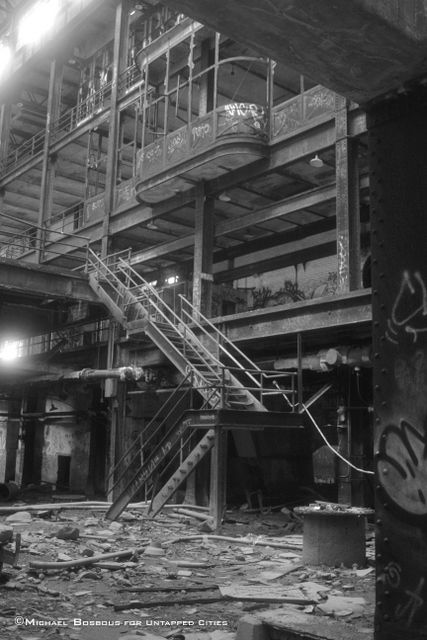Last Chance to Catch NYC's Holiday Notalgia Train
We met the voices of the NYC subway on our nostalgia ride this weekend!


Located seven miles north of the Island of Manhattan stands the ruin of the Glenwood/Yonkers power station associated with the New York Central and Hudson River Railroads. Built as a result of an act passed after 1900 to electrify the urban railroads of New York, the plant was designed by Minnesota-based architects Reed and Stern. Due to the infancy of electrical transportation power, the New York Central and Hudson River Railroad leadership commissioned the architects to build two power plants: the Glenwood/Yonkers plant and its sister plant in Port Morris of the Bronx.

The decline of the Glenwood plant began in 1936 when the New York Central Railroad began buying its electricity rather than producing it. This change proved to be more efficient and economical than producing electricity at separate railroad power plants. The plant was sold to New York’s Consolidated Edison and continued to produce energy until its decommissioning in 1963. Shortly after its closure, the large turbines and boilers were broken down and scrapped. The majority of circuit boards, furniture, and other generic pieces were left behind. Over time, the remains of the plant slowly disintegrated into a mid-20th century urban industrial ruin. Some walls have collapsed into piles of bricks. The remaining graffiti-adorned standing exterior frames smashed windows and a blighted interior.
Here is how it stands today: a monument to the decline of industry along the Hudson River.
The main generating building is split into two halves: the turbine hall and the boiler room. The turbine hall presents an early 19th century French arcade ambiance with its vast open middle that is surrounded by four floors of walkways topped with a giant glass roof. A historical impression is sensed from the structure’s untouched architecture and objects. The main turbine hall is amazing due to its immense size and Piranesi-like walkways and staircases. Its spectacular all-glass ceiling allows vast amounts of light into the great hall and evokes early steel construction design, a time when structure became longer and taller and took on lightness in its architecture. The astonishing glass ceiling has endured more than a century of time.

South of the turbine hall is the boiler room, an area that has unquestionably seen better days. The majority of the boilers have collapsed, producing a long hallway bordered by giant cross beams and piles of bricks. Desks, cubbies, shoes and hangers remain in their original resting places, covered in layers of mud and dust.


To the north of the main generating building is the substation that was turned into some sort of catchall. This building, while not as arresting as the generating building, contains many offices, bathrooms, and locker rooms. The highlight of the substation is its roof access. The roof heralds a beautiful view of the Hudson River as well as a bird’s eye view of the power plant grounds.


We hope this adventure is as stimulating for viewers as it was for us. A word of caution for those who wish to visit: wear comfortable boots and gloves when exploring the fallen plant, even on a beautiful day. Explore at your own risk. And officially, we can’t tell you how to trespass onto the property but if you get off at the Glenwood Metro-North Station you’ll be able to figure it out.
For more pictures, check out the Untapped Cities Facebook page and get the latest news on Twitter. Michael Bosbous is an architecture student at Columbia University Graduate School of Architecture, Planning and Preservation. Michelle is the founder of Untapped Cities and can be reached @untappedmich.
Subscribe to our newsletter